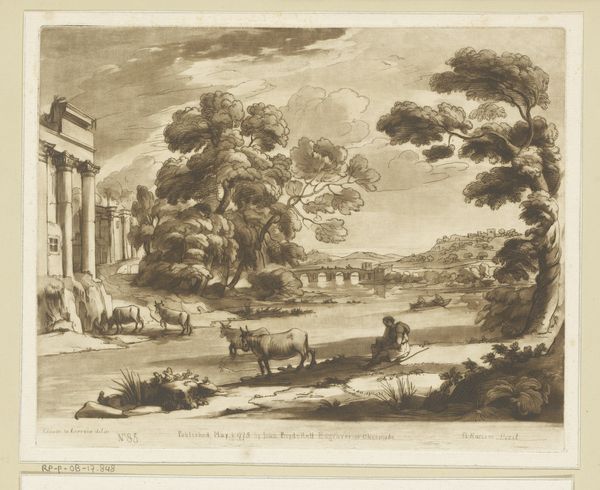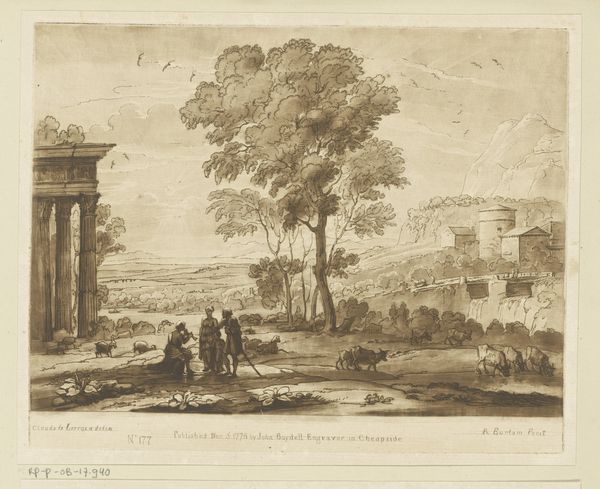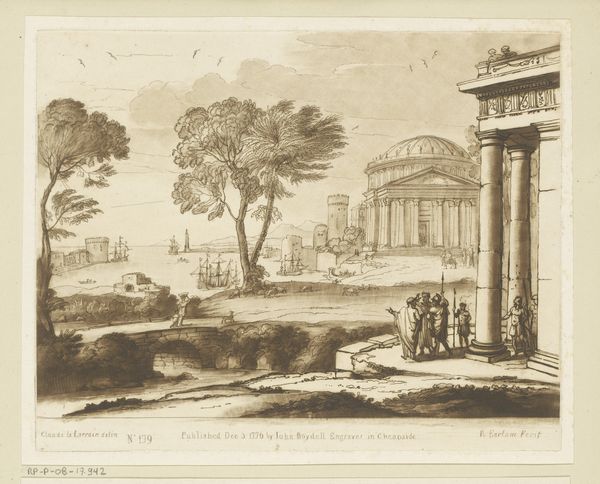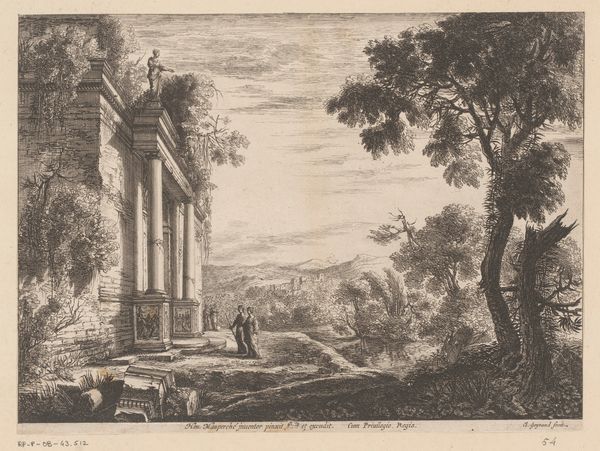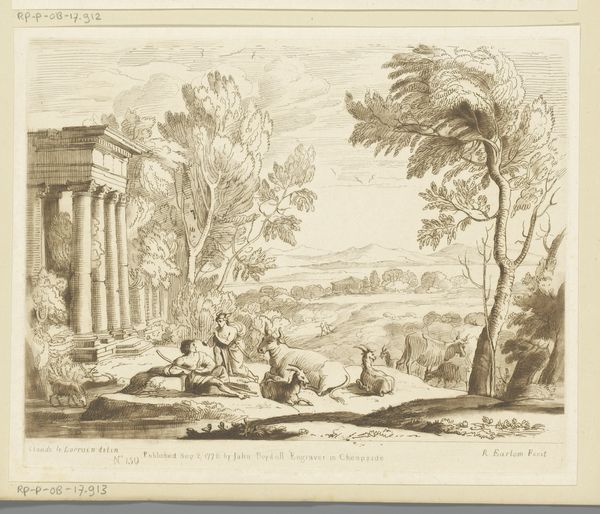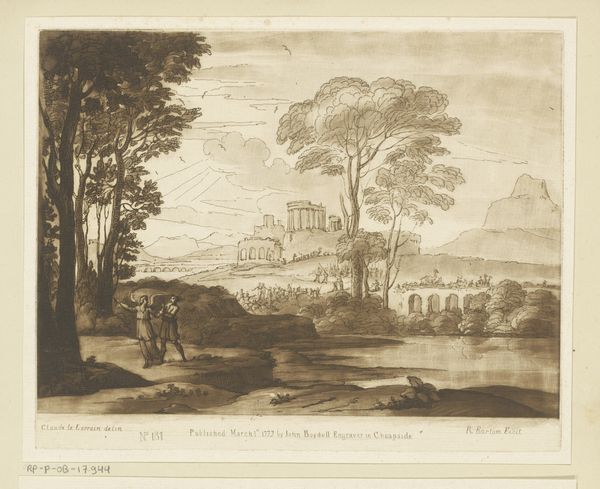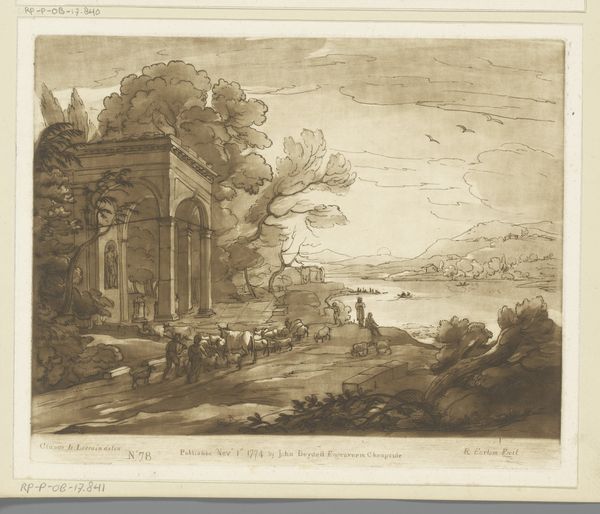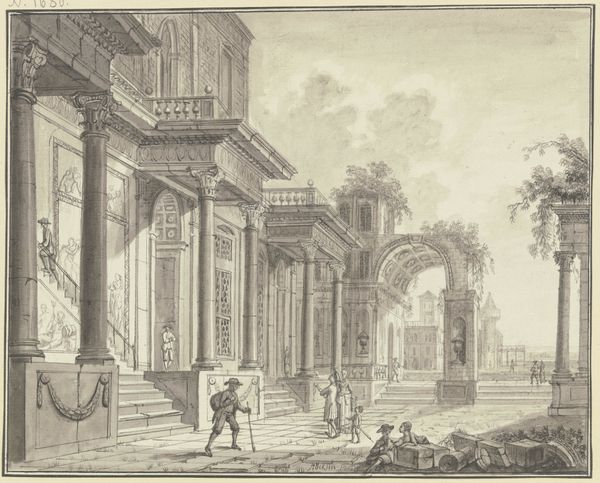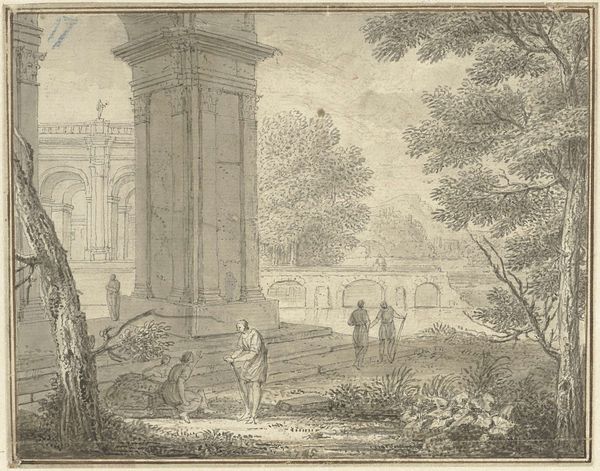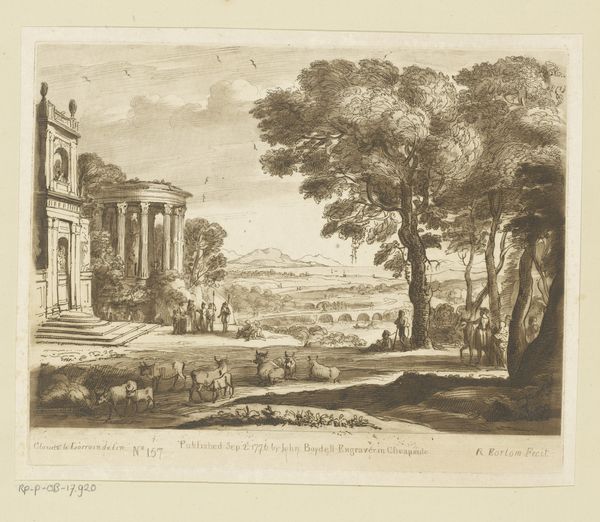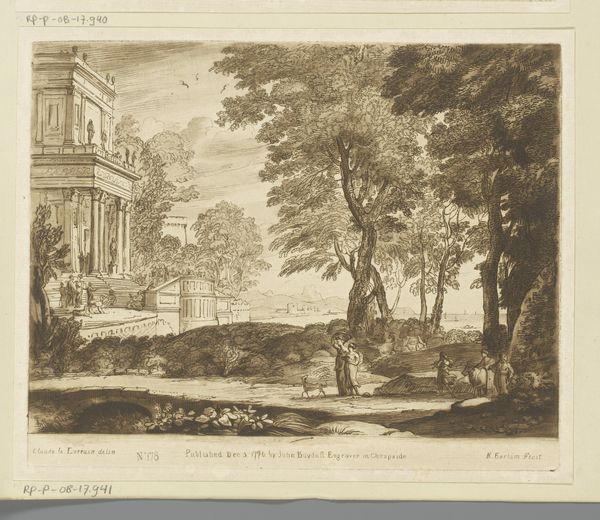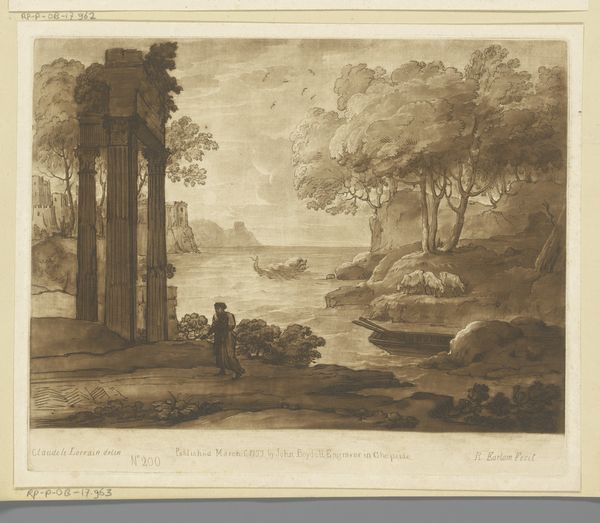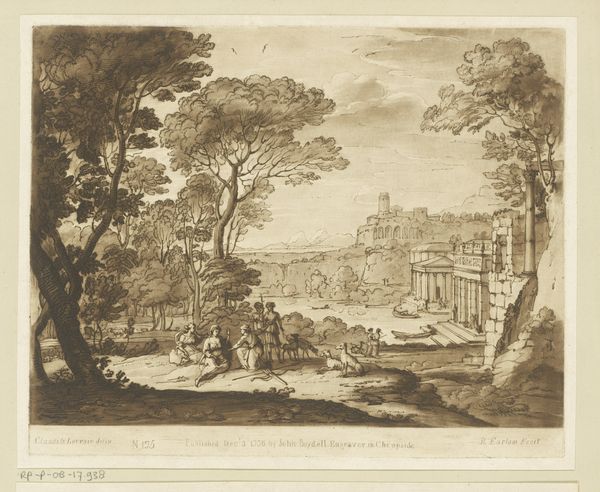
Dimensions: height 207 mm, width 258 mm
Copyright: Rijks Museum: Open Domain
Richard Earlom made this print, "Landschap met Abraham die Hagar en Ismaël verstoot" using the technique of etching. In etching, a metal plate, usually copper, is coated with a waxy, acid-resistant substance called a ground. The artist then scratches an image into the ground, exposing the metal. When the plate is immersed in acid, the exposed lines are "bitten," creating grooves. Ink is applied to the plate, filling these grooves, and the surface is wiped clean. Finally, paper is pressed against the plate, transferring the inked image. Earlom's technical skill is evident in the gradations of tone and the subtle textures he achieved. Look closely, and you'll see how he used varied line weights and densities to suggest depth and atmosphere. The print is after a drawing by Claude Lorrain, and as such, is an exercise in the distribution of artistic labor. Lorrain created the original composition, and Earlom reproduced it, not unlike modern industrial production, where specialized work contributes to a final manufactured product. This print exemplifies the division of labor inherent in printmaking, and its relationship to early capitalism.
Comments
No comments
Be the first to comment and join the conversation on the ultimate creative platform.

